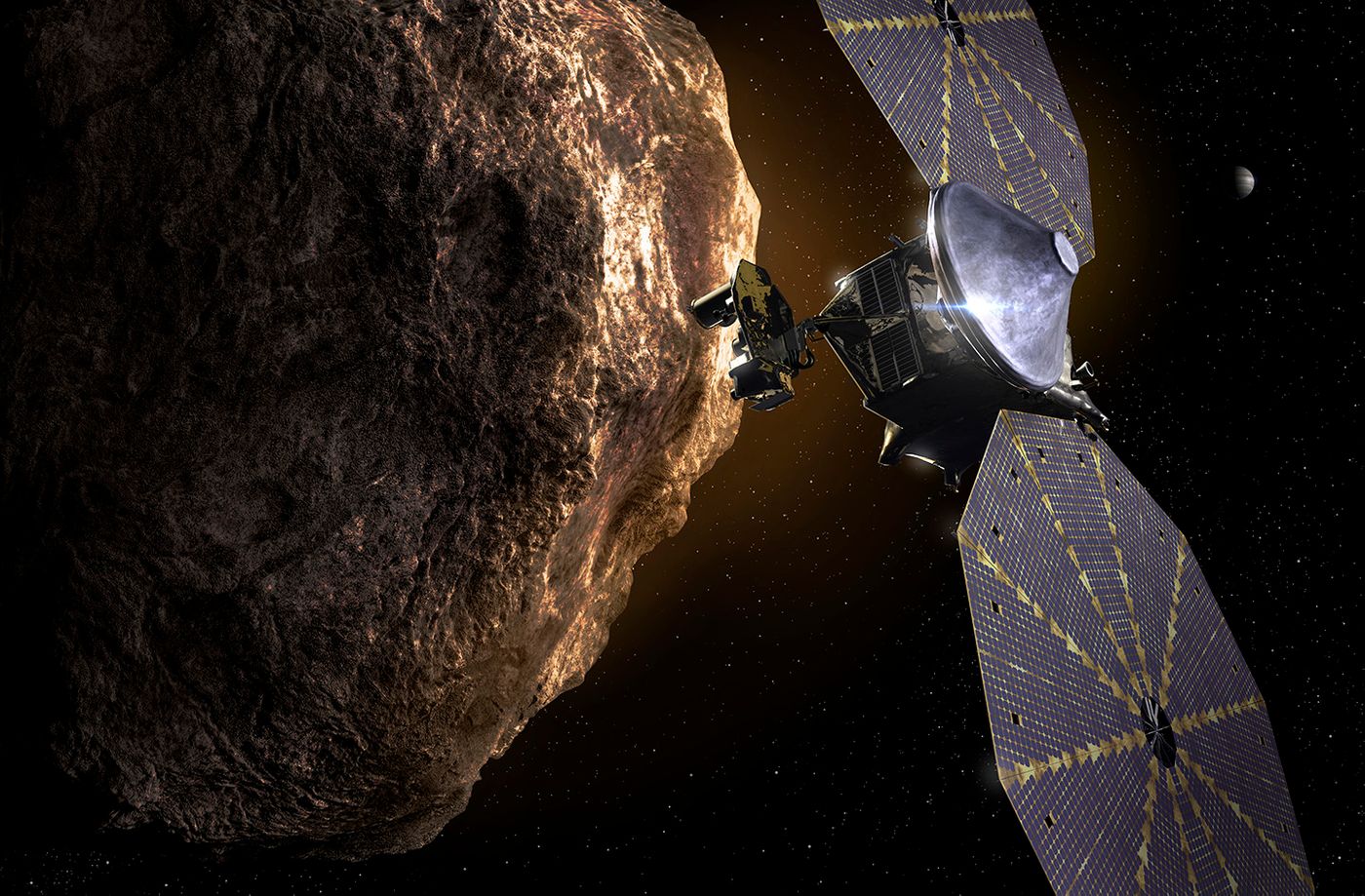NASA Lucy Mission to Visit Jupiter's Trojan Asteroids is Poised to Launch in 2021
Why are we here, and where did we come from? Humankind has been asking these questions since the dawn of time, but legitimate answers appear to be highly elusive. Many of the answers we seek don’t even reside here on Earth. Instead, they could be buried on a primordial rock elsewhere in the solar system, just waiting to be discovered.
Assuming scientists ever get their hands on these clues, they could help humanity paint a better picture denoting how the planets formed and how we all came to be. But we’ll never know for sure unless we start searching, and that speaks to the motivation behind an upcoming mission that NASA has subtly chosen to name “Lucy.”
Image Credit: SwRI
An official statement recently released by NASA denotes the American space agency’s plans to launch the Lucy spacecraft by October 2021. Once it reaches outer space, it’ll head toward the asteroid belt to study six primordial space rocks that scientists commonly refer to as Jupiter’s Trojan asteroids. Lucy wouldn’t arrive at the asteroid belt until 2025, but it will spend the years 2027-2033 studying these captivating bodies.
Citing NASA, these space rocks are of particular importance because they’re thought to be remnants of the early solar system. More specifically, they’re the leftovers of the original matter that would eventually clump together to form the planets of our solar system that we know and study today.
“The Trojans hold vital clues to the origin of the Solar System because they are leftover remnants from, and so were witnesses to, the process that built the planets,” explained Principal Investigator Harold Levison.
Related: Classifying Oumuamua proves more challenging than initially thought
Observations made by telescopes on Earth have helped astronomers discern that Jupiter’s Trojan asteroids are very dark in color – much darker than asphalt. We can theorize about their composition based upon their ominous appearance, but Lucy’s up-close-and-personal approach will capture unprecedented data that could either validate what we think we know or broaden our horizons.
“Dark objects may have organic (carbon-containing) compounds on their surfaces,” noted Amy Simon, a deputy principal investigator for the Lucy mission. “If many of the Trojans we survey show evidence of organics, it will imply that the building blocks for life were common throughout the early solar system.”
Lucy will be equipped with four powerful instruments, including the L’Ralph spectrograph for discerning surface composition, the L’LORRI (Long Range Reconnaissance Imager) high-resolution camera, the L’TES (Thermal Emission Spectrometer) for measuring surface temperature, and the TTCam communications device.
Related: Near-twin of New Horizons' Ralph instrument to study Jupiter's Trojan asteroids
This suite of instruments will provide scientists on Earth with colorful pictures of these distant worlds and bring us one step closer to understanding their composition, densities, and masses, among other things.
It should be interesting to see what Lucy finds when it officially reaches the asteroid belt several years from now. With a little luck, perhaps astronomers will find the answers they seek.
Source: NASA









